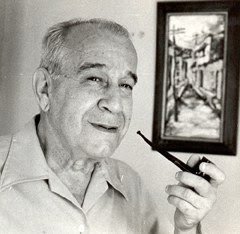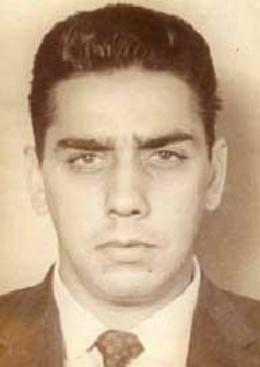
Havana ephemeris. June 24.
1939. Antonio Briones Montoto is born in Havana.
He grew up in a family with patriotic roots. His parents were active fighters of the so-called Generation of 30, which contributed to the overthrow of the dictatorship of Gerardo Machado in Cuba.
Thus, his ideal was forged in hatred of governments submissive to North American interests and became even more entrenched when, in 1952, Fulgencio Batista carried out a coup d'état that frustrated the minimal hope of independence offered by the elections called for that year in the country. He then began to carry out, despite being very young, an intense revolutionary activity. He was the protagonist of the fiercest student struggles that took place in the capital against the Batista dictatorship. On multiple occasions he was arrested, beaten and even tortured by the henchmen of the tyranny. The constant persecution forced him to leave Cuba as an exile to avoid being assassinated, as had happened to other of his companions. After leaving the country, he settled in the United States of America and there he joined the July 26 Movement to continue his revolutionary activity in favor of the independence of his homeland.
After the triumph of the Revolution in 1959 he returned to his native soil and joined the tasks for the construction of the new society. He was part of the National Revolutionary Militias, worked in the Ministry of Finance and, years later, held management functions in the Cuban Institute of Cinematographic Art and Industry, ICAIC, and later joined the ranks of the Ministry of the Interior.
True to his political thinking and revolutionary attitude, he became an internationalist fighter and moved to Venezuelan territory to make a direct contribution to the fight against the regime that ruled that country at the time. There he was assassinated on May 8, 1967.
2001. Eduardo Robreño dies in Havana.

He was a relevant figure, a man who had the gift of words to convey anecdotes, experiences and tell dissimilar stories of characters and events in the life of the Cuban people through the talks he held and also in several books he wrote. It has been affirmed that he was the image of the conversational Cuban par excellence since he captivated the public and readers with the picaresque manner, full of Creole flavor, that he used. There was even someone who, listening to him, might think that what he was recounting, because it was sometimes very little known, could even be the fruit of his imagination, but the truth is that as he told them, in the end almost all or all of his interlocutors left convinced that these were real or at least credible stories.
Due to his proverbial intelligence, simplicity, qualities and way of interrelating with the public, he won the recognition of the people. For his work in a general sense, he received significant recognition and decorations, among them, the Distinction for National Culture, the Alejo Carpentier Medal, and the Replica of the Máximo Gómez Machete.
His birth occurred in Havana on September 23, 1911.
